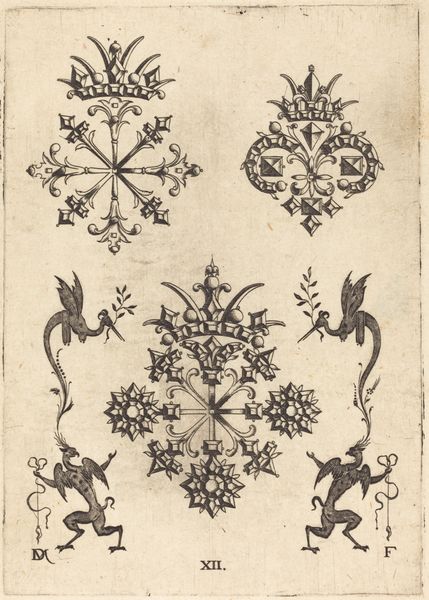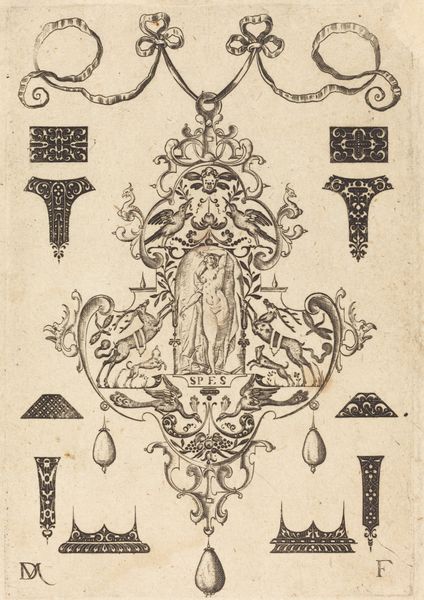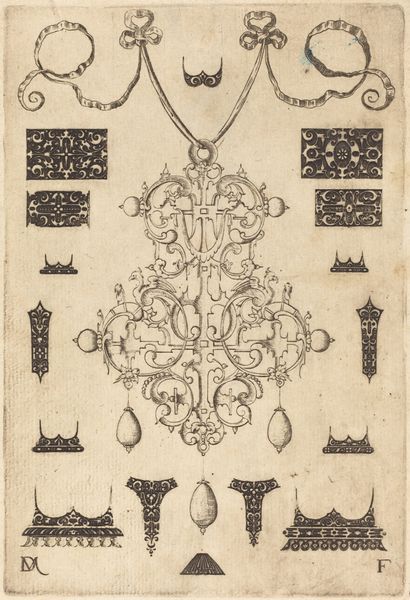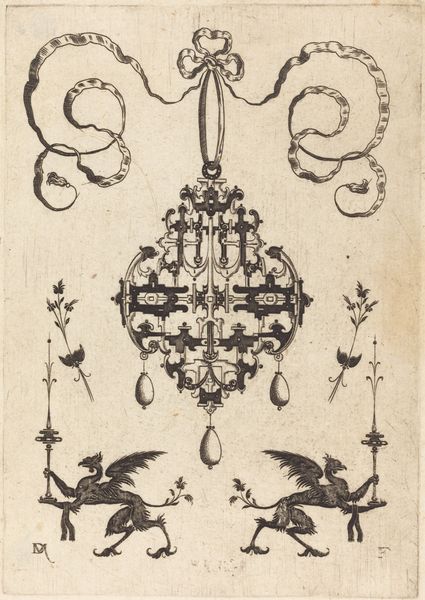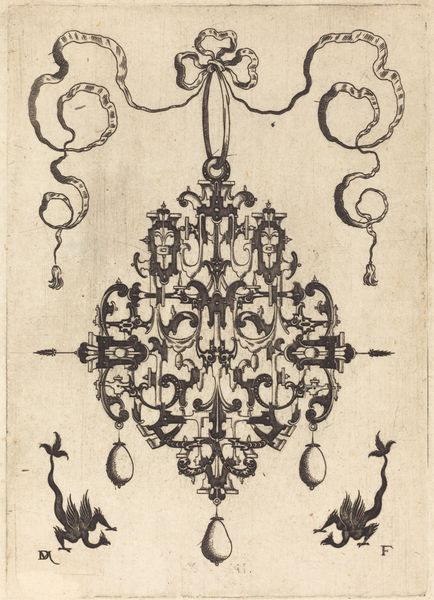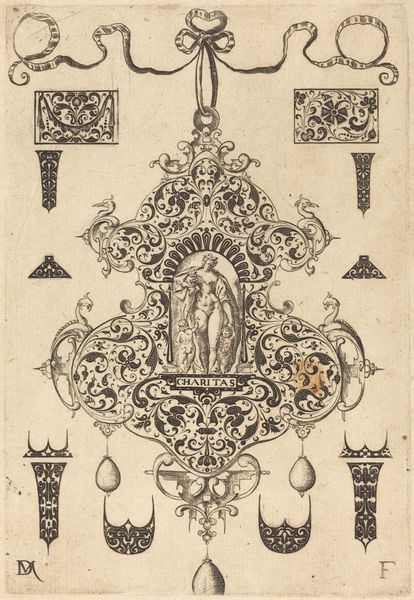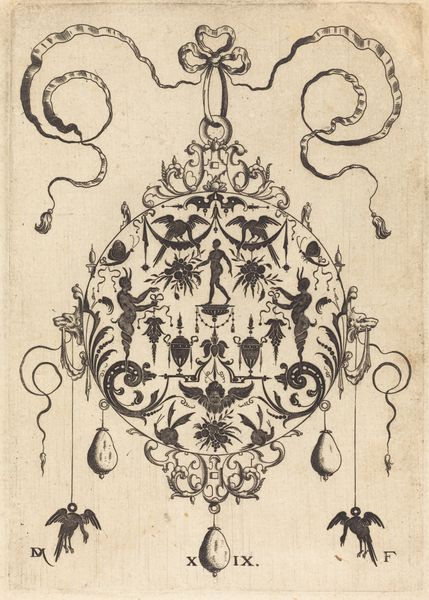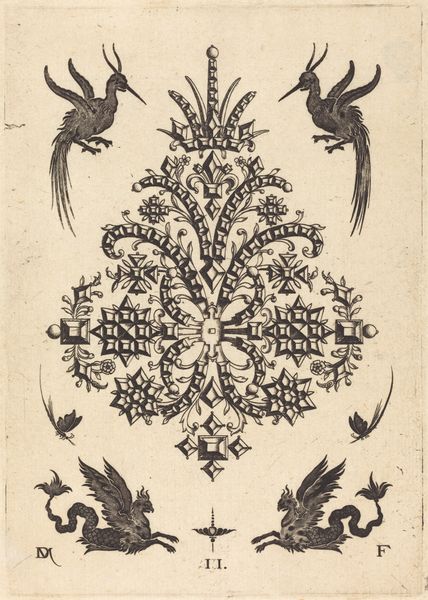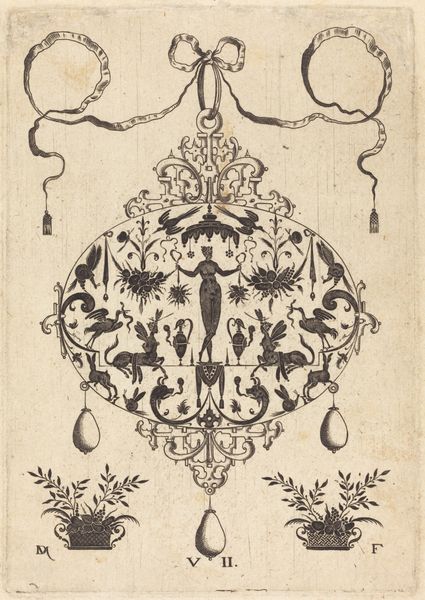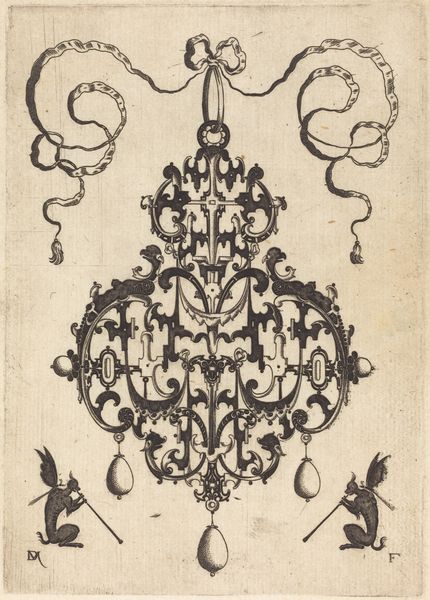
Brooch with Fantasy Animals at Top and Fauns with Vases at Bottom 1596
0:00
0:00
drawing, print, engraving
#
drawing
# print
#
11_renaissance
#
engraving
Copyright: National Gallery of Art: CC0 1.0
Curator: Look at the incredible detail in this engraving! This is “Brooch with Fantasy Animals at Top and Fauns with Vases at Bottom,” created around 1596 by Daniel Mignot. The precision of line is just extraordinary. Editor: It’s certainly striking, if a bit bizarre. Those serpentine dragons at the top seem a bit at odds with the geometric ornament in the center. Almost unsettling, the way the figures frame the symmetrical designs. Curator: Mignot was clearly interested in pushing boundaries, incorporating the fantastical alongside more traditional decorative elements. The contrast highlights the artistry of both forms. Remember this wasn't merely art for art's sake; it was pattern-making that influenced goldsmiths' work. These prints offered tangible designs. Editor: I’m fascinated by the labor involved in crafting such intricate detail through engraving. Imagine the repetitive movements, the intense focus required. The print almost becomes a document of meticulous human effort, a tangible record of the maker’s engagement with material. How were prints like this circulated? Who purchased them and how might they have informed or influenced labor practices more broadly? Curator: The accessibility of prints meant wider dissemination of artistic ideas and, as you say, models for skilled artisans. It allowed a democratization of design previously confined to wealthier circles who would commision goldsmiths. And while the print does feel quite two-dimensional, I can easily imagine that center motif realized as an ornate piece of jewelry, maybe something embellished with gemstones and fine metals. Editor: Indeed. The materiality it depicts evokes that transformation from the page to something precious and worn. We should also think about who wore these brooches—what level of society was permitted or had access to it? Curator: Exactly. Examining it like this makes you think not only about the beauty of it, but about the economics behind that production of beauty, doesn't it? Editor: Yes, considering this intricate design work we see today opens a door to a wider exploration of craft production in the late 16th century. The level of complexity raises compelling questions regarding value and social status.
Comments
No comments
Be the first to comment and join the conversation on the ultimate creative platform.


